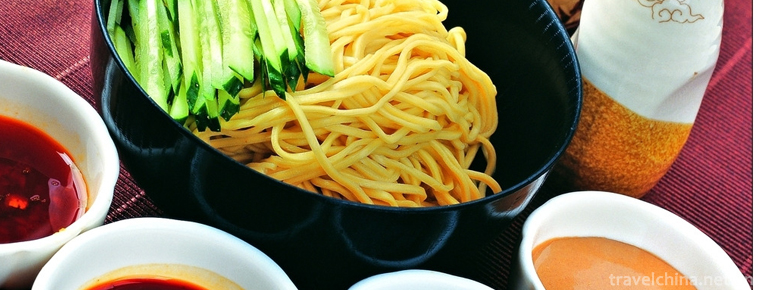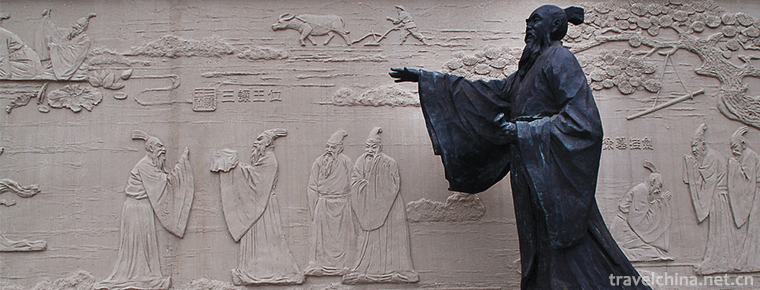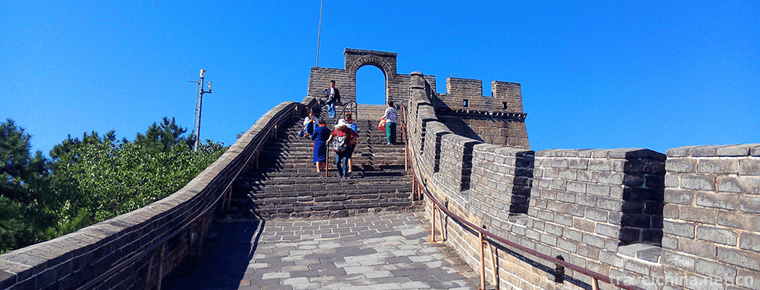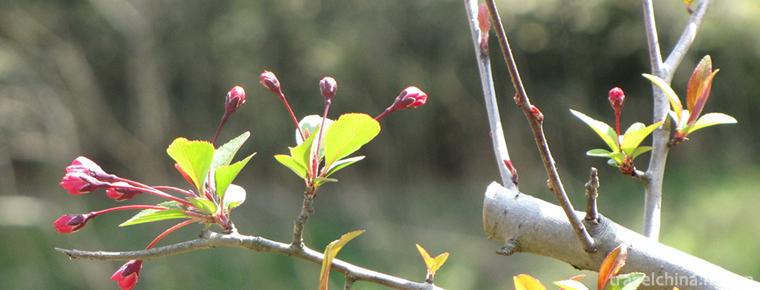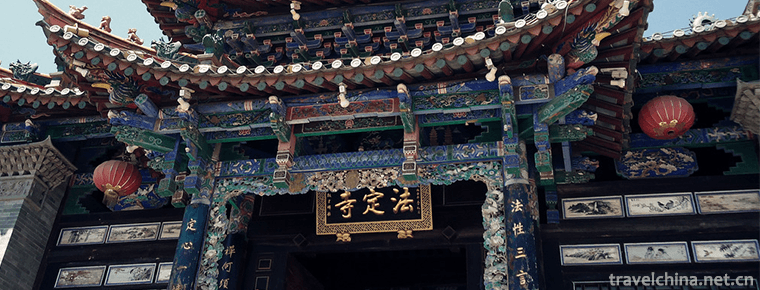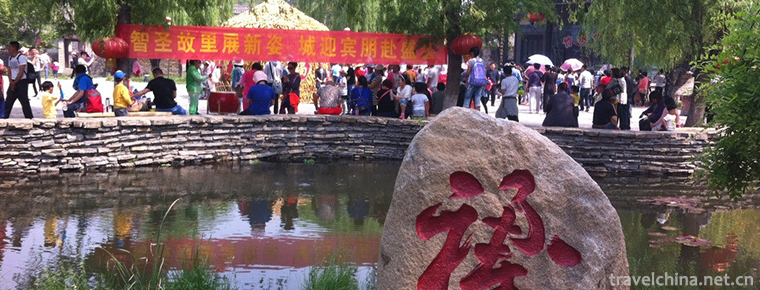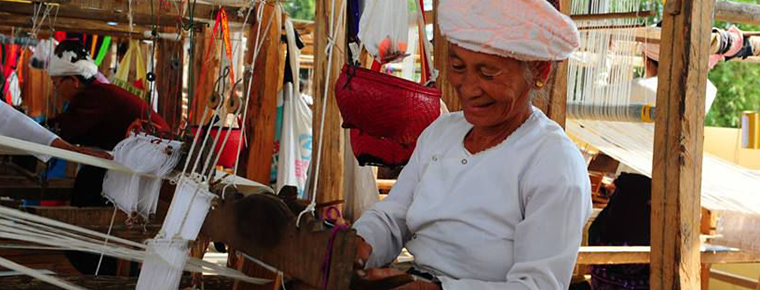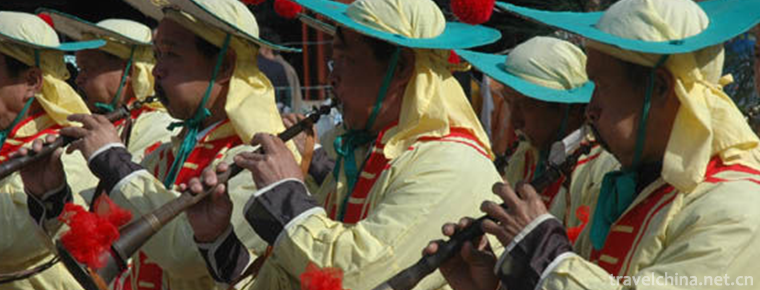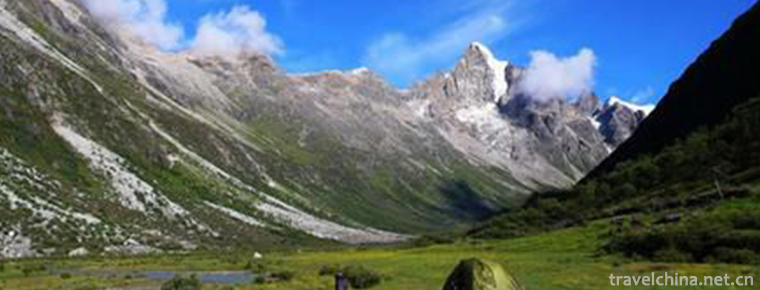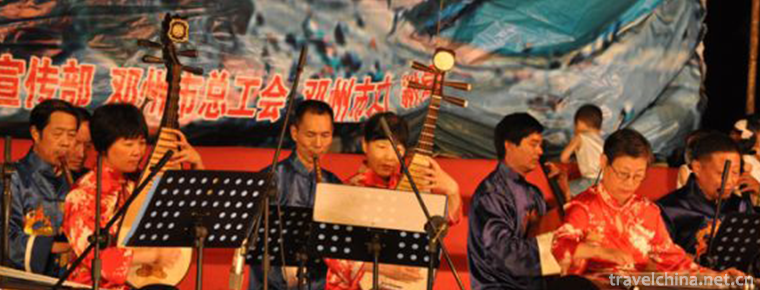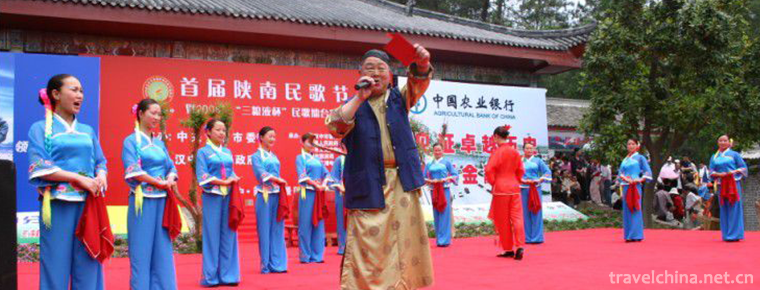Sangzhi Folk Song
Sangzhi Folk Song
Sangzhi Folk Song, a local traditional music in Sangzhi County, Hunan Province, is one of the national intangible cultural heritage.
Sangzhi folk song originated from the ballads of the ancestors'daily production and life in the primitive farming period. It is a kind of folk music culture created, Sung and accumulated by the people of Sangzhi County in Hunan Province in the long-term life practice. It has a history of more than 2000 years. Sangzhi folk song has a lively rhythm, beautiful melody, rich melody and various forms. With its unique lining and lining, it shows simple, sincere feelings and exciting chords, which is deeply favored by composers.
On May 20, 2006, Sangzhi Folk Song was approved by the State Council of the People's Republic of China to be included in the first batch of national intangible cultural heritage list, item number: II-10.
historical origin
Sangzhi folk songs originated from the songs of the ancestors'daily production and life in the primitive farming period. Since the founding of New China, the Party and the government have been very concerned about the economic development of minority areas, attached great importance to the excavation, collation and improvement of national culture, and successively organized relevant personnel to rescue and collate Sangzhi folk songs.
Cultural characteristics
Sangzhi folk song has a lively rhythm, beautiful melody, rich melody and various forms. With its unique lining and lining, it shows simple, sincere feelings and exciting chords, which is deeply favored by composers.
Sangzhi folk songs are rich in structure, diverse melodies, many scales and modes, and more modified lyrics.
Sangzhi's folk song style includes half-sentence style, one-sentence style, two-sentence style, three-sentence style, Four-Sentence style, five-sentence style, six-sentence style, seven-sentence style and wearing songs, etc.; "repetition" and "conjunction" are its usual melody creation techniques, and also have original skills, such as "compression", i.e. rhythm contraction; "lengthening" is the extension of rhythm; "teasing" is a certain established folk song phrase. Insert new factors in the middle; "Zhuba" means adding new melodies before or after a given phrase or paragraph to form a melodic expansion; "float" means that the melody moves upwards; and "sink" means that the melody moves downwards. In addition, there are "leave head to tail", "leave head to tail", "change pattern", "dig liver to lung" and other techniques, and the melody is mostly decorated with Boeing, leaning, sliding, etc.
In terms of scale mode, Sangzhi folk songs are mainly composed of "five-tone characteristic mode" and "five-tone feather mode". There are also a few other Palace mode, quotient mode, angular mode and special scales with deviation, such as "four-tone feather mode", "four-tone characteristic mode" and "four-tone characteristic mode" with deviation, such as "clear angle" or "seven" (changing palace).
In terms of lyrics, Sangzhi folk songs often use literary rhetoric techniques such as metaphor and parallelism, and adorn them with a large number of local characteristics, such as lining words, lining words and Erhua sounds, which have strong national style and high artistry.
Sangzhi folk songs are mainly composed of Sangzhi dialect with a heavy roll of tongue. Its singing voice is primitive and rough, which is the unique personality of Sangzhi people formed in the long-term blocked living environment. In singing, Sangzhi's folk songs show infinite charm in depicting musical image, revealing the inner world of the singer, conveying people's thoughts and feelings, and setting off the atmosphere of the environment, and make Sangzhi's folk songs have high aesthetic value.
Subject works
Sangzhi's folk songs are of various genres, various repertoires and rich contents. There are high and bright folk songs, the repertoire is "Bugu", "Cold water brewing tea slowly thick", "the world is only the most precious" and more than 1400 branches, which belong to three categories: high-pitched, low-pitched and flat-pitched.
There are nearly 300 interesting and lively tunes, such as "Upper Sichuan", "Snow Seeing the Sun in the Air", "When I Watch the Flowers of Sophora japonica" and so on. They can be divided into love songs reflecting love life, misery songs reflecting miserable life and seasonal minors recording production and life.
There are more than 140 inspiring slogans, including "Yaoshui oar slogan", "Prying stone slogan", "Bearing the burden slogan", "Picking up the moth's eyebrow moon in the middle" and so on, which are included in the four categories of "Yaoshui slogan", "Rock Worker's slogan", "Handling slogan" and "Grass slogan".
There are warm and cheerful lantern tunes. The repertoire includes "Happy Lantern Playing", "Four Seasons Flowers Blooming", "Flowers and Trees Entangling Me and Entangling Him" and more than 130 pieces.
According to the form of performance, there are literary lanterns, martial arts lanterns, ugly lanterns, jumping lanterns, lazy lanterns and so on. If we start from the subject matter, we can divide it into three categories: singing lamp tune, flower lamp praise and love song.
There are more than 80 revolutionary red songs with more and more fighting spirit, such as "General Helong arrives", "Hang a lamp at the door", "Be a soldier, be a Red Army", "Strength of the Peasant Association" and so on.
According to the content of the performance, it can be divided into four categories: celebrating the Dragon song, military and civilian love song, celebrating the Red Army song and celebrating the peasant movement.
There are naive children's songs, including "Catching Crabs" and "Counting Toads" and dozens of other works.
There are folk ritual songs with strong folk customs. There are about 360 works, such as "Worship for ancestors" and "Crying for the Dead", which belong to Nuo tune, marriage song, Bai origin song and elegy.
In addition, there are a few natural and quiet lullabies, such as "The Red Army Comes to Be the Master"; folk songs of various genres, such as "Car Lamp is Strange" (Car Lamp), "Sangzhi Helong" (Three-stick Drum), "Wind and Rain Become Happy in the Year" (Nine-stick Whip) and "Congratulations on the Lord's Eastern Hobby House Farm" (Lotus Lotus Lotus Lotus Lotus Lotus Lotus Lotus Lotus Lotus Lotus Loud).
Inheritance and Protection
Inheritance value
Sangzhi folk song shows its unique artistic charm in singing aloud and murmuring. Generally speaking, it has two values:
(i) Social and cultural aspects
Sangzhi folk song is the product of Sangzhi's unique geographical environment and closed and semi-closed living condition. Up to now, there are still many ballads reflecting primitive religions (such as Nuoqiang, hay gongs and drums). The Lyric structure of the three sentences provides precious information and examples for the study of the diversity of Chinese folk songs, which embodies the simple philosophy of Sang Zhiren's worship of "three".
(2) Artistic features
Sangzhi folk songs are divided into folk songs, minor tunes, etiquette songs, Nuo tune and so on, covering a variety of traditional folk songs. Its rigorous structure and various forms of music, especially the use of the lining words, make folk songs reach a very high artistic realm in setting off the atmosphere and revealing the inner feelings of the characters.
In addition, Sangzhi folk song's special moistening method and air-voice singing skills greatly enrich the theory of folk song singing and provide a unique example for vocal music singing.
Heritage figures
Shangshengwu, male, in April 2018, Shangshengwu was selected as the fifth batch of representative inheritors of national intangible cultural heritage projects, declaring the area: Sangzhi County, Hunan Province.
Tang Guizhen, female, was born in Xian'e Village, Liyuan Town, Sangzhi in August 1977. She is the representative inheritor of Sangzhi Folk Song Project at the municipal level.
Zhang Jiaqing, male, Tujia nationality, was born in 1973 in Damutang Village, Shataping Township, Sangzhi County. He is the representative inheritor of Sangzhi Folk Song Project at the municipal level.
protective measures
In 2008, Sangzhi County was named "Town of Chinese Folk Songs" by the Chinese Artists Association, which better protected the inheritance of Sangzhi Folk Songs.
On November 8, 2017, the finals of Sangzhi Folk Song King were held in Shuoziqiu, Bai Nationality Township, Mahekou, Sangzhi County. The finals of Sangzhi Folk Song King 2017 were held nationwide. It is the first national culture of Sangzhi Folk Song to learn and implement the spirit of the Nineteenth National Congress of the CPC, to promote the brand of Sangzhi Folk Song, to enhance the influence of Sangzhi Folk Song, to develop the industry of Sangzhi Folk Second good publicity and inheritance.
social influence
Important activities
On November 10, 2017, the literary and artistic performance of Zhangjiajie Sangzhi Folk Song Festival was held at Helong Stadium in Sangzhi County. The inheritors of Sangzhi Old Folk Songs jointly sang Sangzhi's original ecological folk songs.
Honorary recognition
In October 2005, Sangzhi Folk Song was named "Ten National Folk Cultural Heritage of Hunan Province".
In 2011, Sangzhi Folk Song was rated as "Ten Most Charming Non-Heritage Items in Hunan Province".
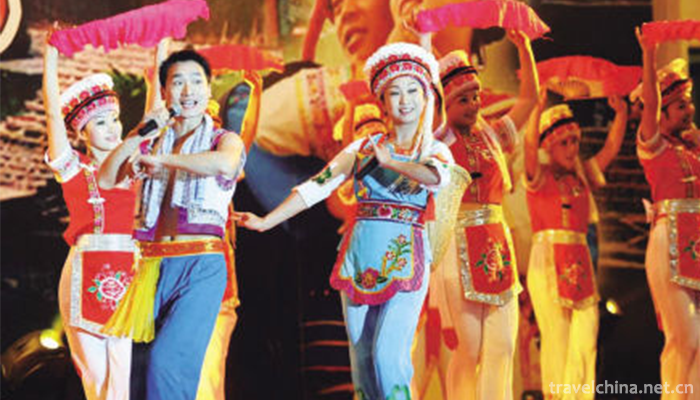
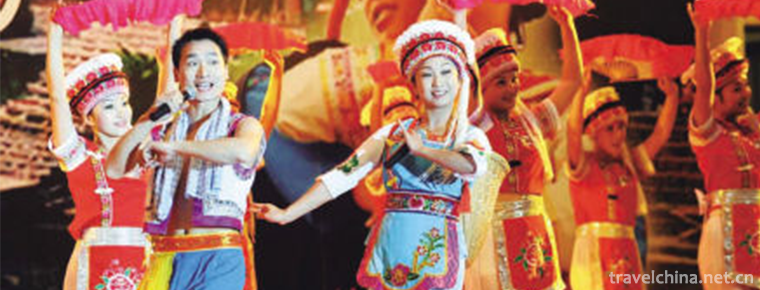
Sangzhi Folk Song
-
Cold Noodles with Sesame Sauce
Cold Noodles with Sesame Sauce are also called cold noodles
Views: 152 Time 2018-10-12 -
The AncientCity of Ping Yao
The AncientCity of Ping Yao is located in Pingyao County, central Shanxi Province. It was founded in Xuanwang Period of Western Zhou Dynasty (827-782 BC).
Views: 330 Time 2018-11-24 -
China of chunqiu yancheng tourist area
China Spring and Autumn Yancheng Tourist Area (also known as Yancheng, Spring and Autumn Yancheng) is located in the central city of Wujin District, Changzhou City
Views: 271 Time 2018-12-06 -
The Badaling Great Wall
Juyongguan Great Wall is a famous ancient city along the Great Wall of Beijing and a national cultural relic protection unit. It is a national AAAA scenic spot assessed by Beijing Tourism Bureau
Views: 358 Time 2018-12-09 -
Gucun Park Shanghai
Gucun Park is located in Gucun Town, Baoshan District, from north to Shapu, south to Jiazaobang, and adjacent to Huanbei Avenue of the Outer Ring Road,
Views: 110 Time 2018-12-19 -
Ancient town of Guandu
Guandu Town, located in the Southeastern Suburb of Kunming, is one of the famous historical and cultural ancient towns in Kunming. Guandu ancient town gate (big archway) is located in the southeastern
Views: 159 Time 2019-01-13 -
Zhuquan Village Tourist Resort
Zhuquan Village Resort is located in the north of Yinan County, Shandong Province, 12 kilometers away from the county. It was called Quanshangzhuang in Yuan and Ming Dynasties and was renamed Zhuquan
Views: 181 Time 2019-03-21 -
Dai brocade weaving skills
Dai brocade weaving is one of the traditional handmade brocade weaving techniques in Xishuangbanna Dai Autonomous Prefecture, Yunnan Province, and one of the national intangible cultural heritage.
Views: 215 Time 2019-04-24 -
Hebei Drum Music
Hebei drum and percussion music is a local traditional music mainly composed of percussion instruments and percussion instruments. It has been an important type of music
Views: 157 Time 2019-05-02 -
Jiali Folk Stories
On May 23, 2011, Jiali Folk Stories were approved by the State Council to be included in the third batch of national intangible cultural heritage list.
Views: 404 Time 2019-05-05 -
Silk Strings of Laohekou
Laohekou Silk String is a traditional folk music in Xiangyang City, Hubei Province. Laohekou Silk String is different from other forms of folk literature and art. It is a music that combines folk arti
Views: 307 Time 2019-05-11 -
Zhenba Folk Song
Zhenba folk song is a huge cultural wealth created and accumulated by Zhenba people for thousands of years, and it is an important component of Zhenba regional culture. Zhenba folk songs are very rich
Views: 194 Time 2019-07-25
